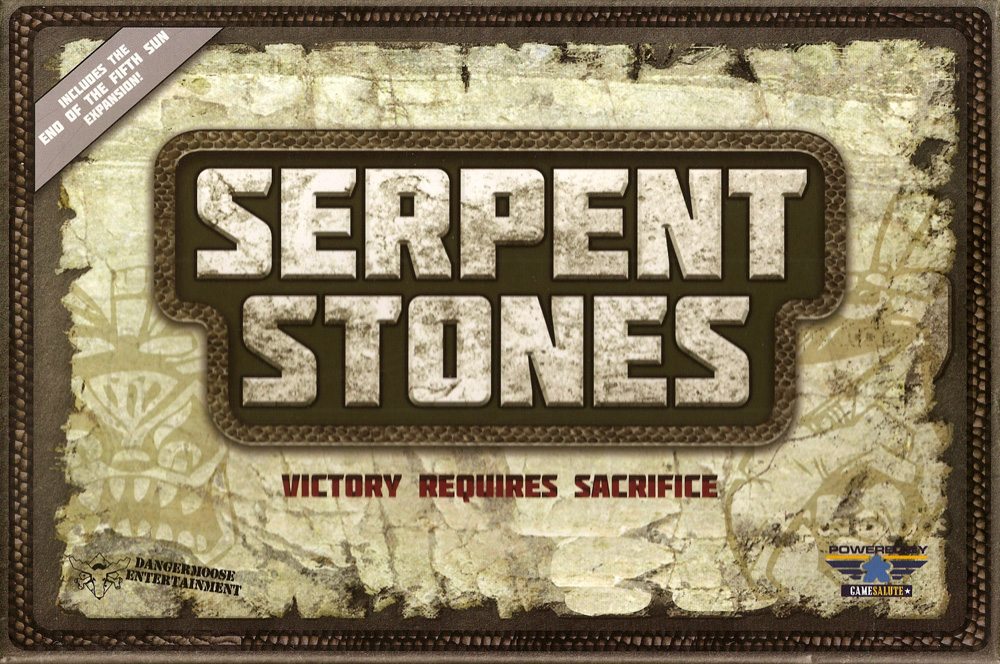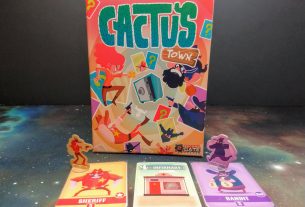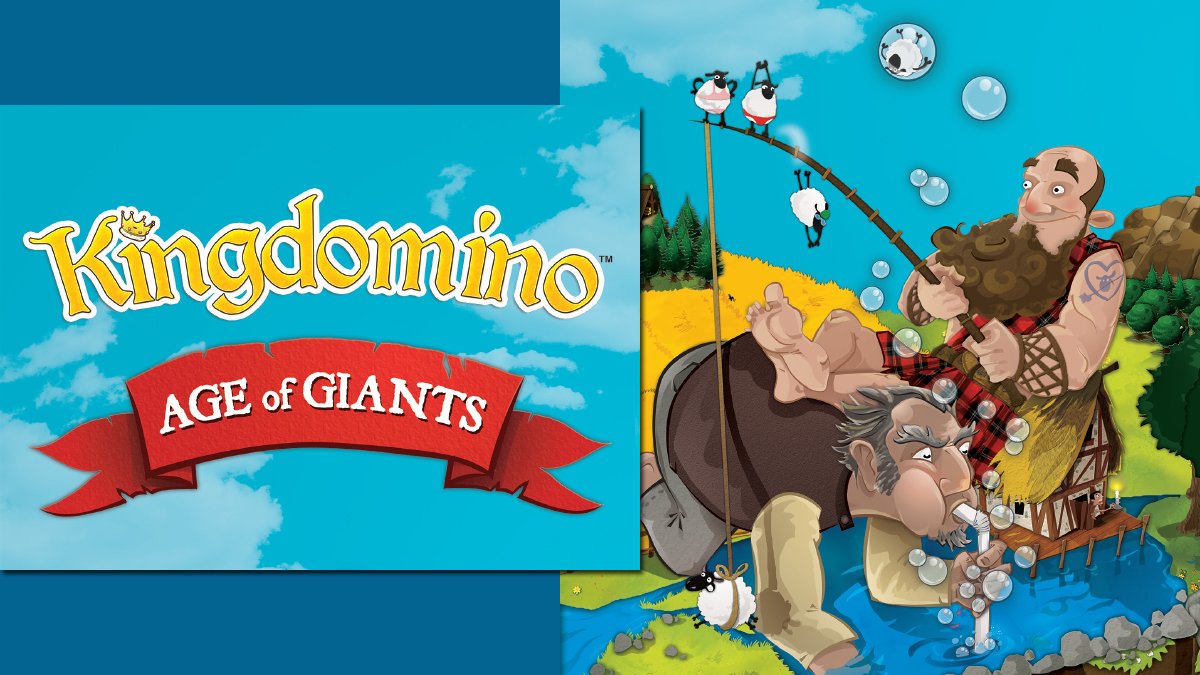Table for Two is a series focusing on two-player tabletop games. 600 years ago, Aztecs played a game using arrowheads, forming long serpents to strike the opponent. At least, that’s the story. Now, you can play a game inspired by itzlcoatl—Serpent Stones.
At a glance: Serpent Stones is for 2 players, ages 8 and up, and takes about 30 minutes to play. It retails for $40.
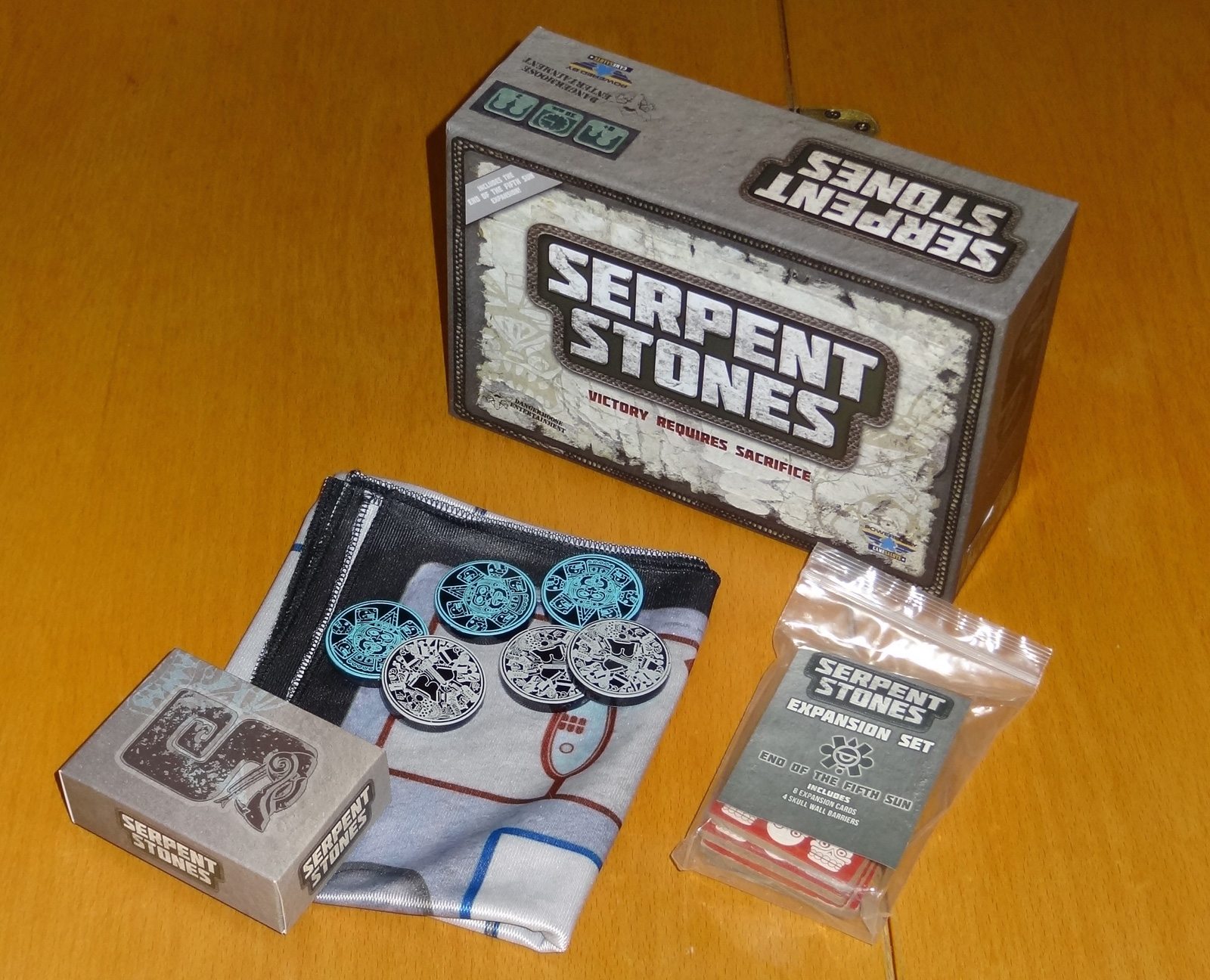
Components:
- 1 fabric game board
- 6 acrylic chips
- 72 base game cards
- 8 End of the Fifth Sun expansion cards
- 4 Wall of Skulls tiles (for expansion)
The game board is a large cloth, 24″ x 30″. It’s heavier than a silk scarf but has a similar texture. It’s a nice way to get such a large board to fit in a small box, but the fabric is easy to snag while you’re picking up cards, and it’s light enough that it shifts around while you’re trying to play the game.
The six acrylic chips, representing the Teotl Stones that you’re trying to capture, are a hard plastic that’s almost glassy, making a nice “clink” against each other. The images look to be silkscreened on, so I don’t know if there would be an issue with the paint wearing off if the chips rub against each other a lot in the box.
The card illustrations are pretty good, but the cardstock quality isn’t the best. I was somewhat worried about creasing cards when I shuffled. The Wall of Skull tiles are card-sized cardboard tiles which are really thick—thicker than cardboard tokens in most games.

How to play
The full rules are available on the Serpent Stones website.
The goal of the game is to be first to capture all three of your opponent’s Teotl Stones. Or, you can also win the game under a special force discard rule.
One player is the Jaguar Warriors and the other player is the Eagle Warriors. Although you may play either type of warrior from your hand to the board, your chain must begin with your own warrior. Each player gets a hand of seven cards and discards two, and places three Teotl Stones in the center of their Temple Stone (the center space in the row closest to them).
On your turn you get to draw a card, then play or discard one card.

The basic idea is to play a chain of warriors from one of your Keystone spaces (the two spaces next to your Temple Stone) all the way to the opponent’s Temple Stone. Warriors with the arrowheads pointing away from you belong to you, and warriors with arrowheads pointing at you belong to your opponent. You may only add warriors adjacent to an unbroken chain from your Keystone—if the chain becomes broken at any point, the warriors after the break become inactive until you’re able to reconnect the chain.
There are Teotl (god) cards which have special effects when played—draw an extra card, force the other player to discard a card, or Sacrifice, which is a special action I’ll explain a little later. The force discard card has a special win condition, Wrath of Tezcatlipoca—if you play this on an opponent who has fewer than two cards left in their hand, you immediately win the game.
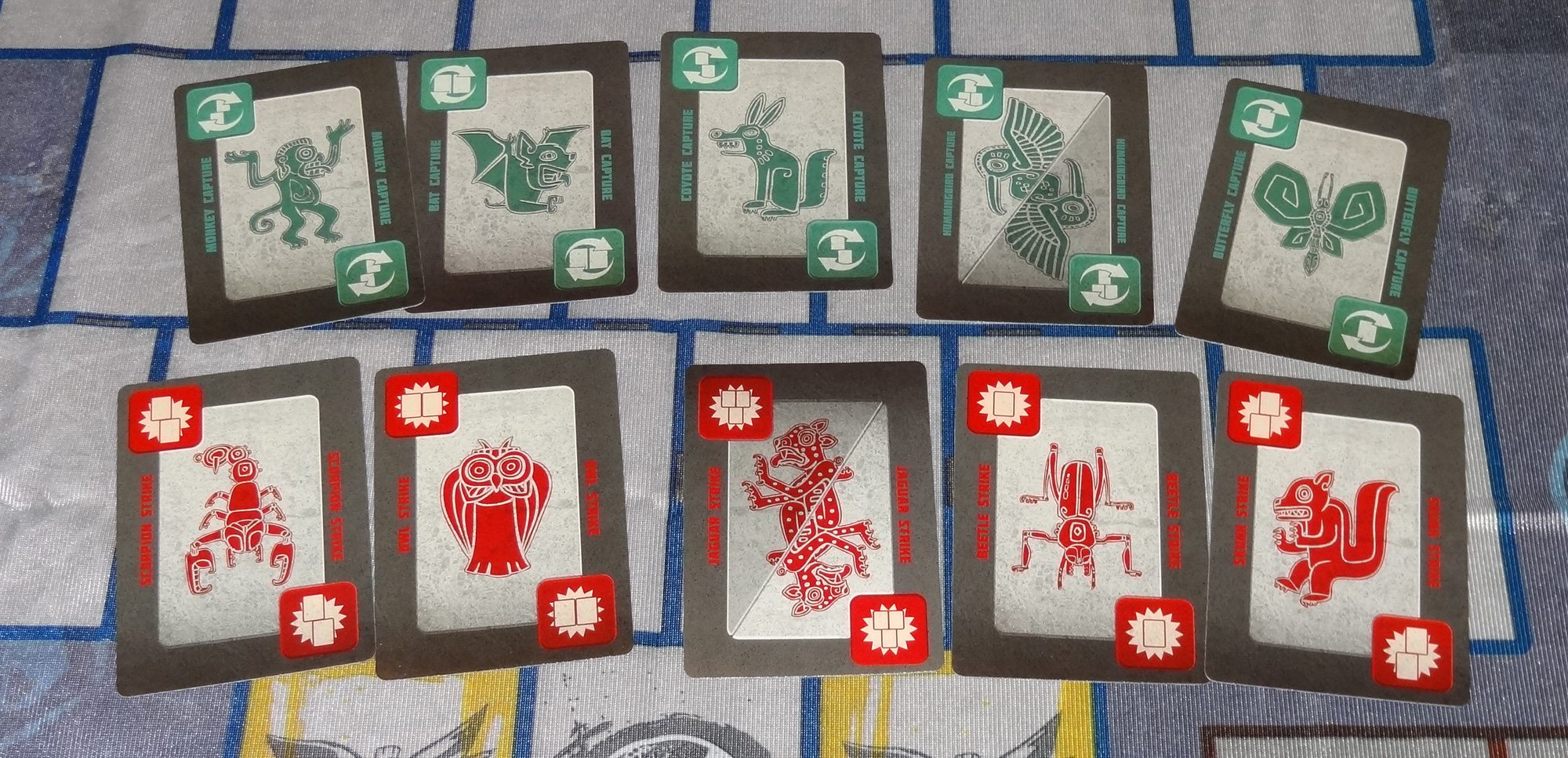
Nahualli cards allow you to attack your opponent’s warriors. The green capture cards let you turn other warrior cards around, thus taking control of them. Red strike cards let you discard warriors from the board. You must have a warrior adjacent to an opposing warrior, and then you select a pattern on the board that matches the pattern on the card. All opposing warriors in that pattern are affected by the attack.
The Sacrifice action allows you to sacrifice turns in order to take multiple actions on a future turn. You play a Sacrifice card, and then place a card from your hand onto your first Sacrifice Stone (the space next to your home row). On your next turn, you may play a second Sacrifice action (if you have another Sacrifice card) to place a second card on the second Sacrifice Stone. Otherwise, you must play or discard the cards from your Sacrifice Stones in order, and then play or discard one card from your hand as normal.
The Sacrifice action makes it possible to play a warrior and an attack on the same turn, or play a few warriors in a row, but at the cost of one or two turns.
When a Teotl Stone is captured, the board is cleared, cards are reshuffled, and another round begins. The game ends when one player has captured all three of their opponent’s stones.
There are a few variant rules, too: The King Variant only allows you to strike warriors from the opposing house, rather than your own warriors that are controlled by the opponent; likewise, you may only capture warriors that belong to your own house and are controlled by the opponent. In the God Variant, neither player controls a house, but Nahualli attack cards only affect the opposite house from the attacking card.

Finally, the included End of the Fifth Sun expansion adds eight more cards and the Skull Wall tiles. The cards are shuffled into the deck, and setup is as normal. Each player may choose to place one of the Skull Walls on any space on the board other than a home row. The object of the game is the same, but the walls prevent that space from being used for the rest of the round.
Also, there are some new Teotl cards: one discards any cards on the opponent’s Sacrifice Stones, one allows you to move a warrior on the board, and the last one lets you place a new Skull Wall next to one of your active warriors. Finally, there’s a new Nahualli strike card that lets you discard up to five warriors in one blow.
The Verdict
Serpent Stones has some interesting gameplay, particularly in the way that opposing warriors can be either discarded or turned into your own warriors. When you’re approaching the opponent’s chain of warriors, you have to consider what will happen if he captures your cards and turns them against you. The Sacrifice action is a little tricky to use well, but can also be very effective if you can line up a warrior and an attack back-to-back.
I’m not sure if I like the Extra Card/Force Discard Teotl cards, particularly the ability to win the game simply by forcing the other player to discard down. That seems more like a luck-based win, if you happen to get the force discard and your opponent can’t get any extra cards. Plus, playing a card to draw a card increases your hand size but is sort of a wasted action otherwise.
The expansion rules do add some new twists—the Skull Walls keep the board from just being a wide-open field, and in particular can force your opponent to play warriors in a pattern that you can attack. Of course, a wall that you placed may end up working against you, too, so it’s a double-edged sword. The ability to discard another player’s Sacrifice cards also makes the Sacrifice action more risky.
The one downside, in my opinion, is the component quality. The cards don’t feel like they’ll hold up to repeated plays, but the bigger issue is that during play we kept having to smooth out the cloth board whenever somebody tried to remove or turn Warrior cards. It’s hard to say how much more I’d enjoy the game if it were on a regular board instead of the fabric.
Overall, I think Serpent Stones is an intriguing two-player game. It’s like an abstract strategy game, but the Teotl cards add a little more to the mix. With better components it could be an excellent game, but unfortunately they’re not great. However, if you like the Aztec theme and the story behind the game, you may enjoy Serpent Stones.
For more about the game, visit the Serpent Stones website.
Disclosure: GeekDad received a review copy of this game.
